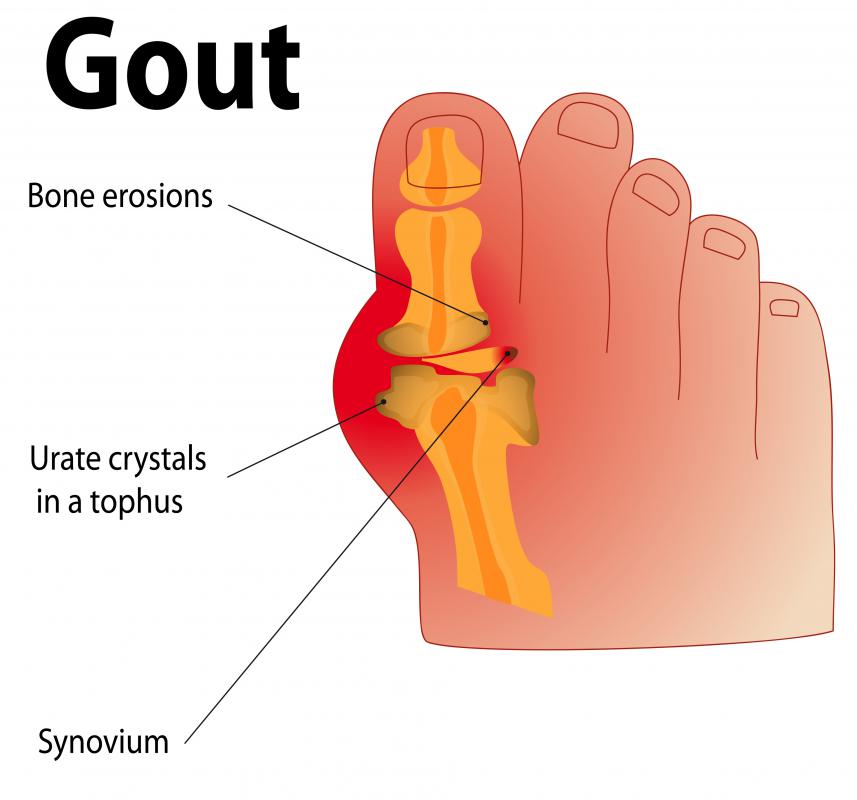At WiseGEEK, we're committed to delivering accurate, trustworthy information. Our expert-authored content is rigorously fact-checked and sourced from credible authorities. Discover how we uphold the highest standards in providing you with reliable knowledge.
What Factors Affect a Sufficient Fenofibrate Dose?
Since its reformulation as the medication Tricor® in 2005, fenofibrate has been used predominantly for patients in danger of serious cardiovascular risk to reduce low-density lipoprotein (LDL), known as bad cholesterol, as well as to increase high-density lipoprotein (HDL), known as good cholesterol. Unfortunately, the conclusion of the massive longitudinal Fenofibrate Intervention and Event Lowering in Diabetes study surprisingly found no statistically significant reduction of risk for heart attack or coronary heart disease death, whether the medication was used along with statin drugs. The study did, however, find a significant decrease in the incidence of some types of amputations in diabetic patients, although its efficacy is likely due to non-lipid mechanisms. Other uses of fenofibrate include the adjunctive treatment of gout or as an alternative blood-thinning medication. When used for these purposes, as well as in patients with a minor reduction in kidney function, a lower fenofibrate dose may be used.
While patients with a CrCl level of less than 50 ml/min, or less than 30 ml/min in the case of Fenoglide®, are considered to have too serious a renal insufficiency to take this drug, those with levels between 80 ml/min and 50 mL/min, or between 80 ml/min and 30 ml/min for Fenoglide®, may use a reduced fenofibrate dose. According to the manufacturer's recommendations, the daily fenofibrate dose for patients taking Lofibra® who have minor lowered renal function is 67 mg once daily with food, while the recommended dose for patients taking Antara® is 43 mg. Patients using Triglide® should be given a single 50 mg dose daily with food, while those who qualify for Fenoglide® should take a single 40 mg dose. The fenofibrate dose should be increased only after careful consideration of the effects of the drug on both lipid levels and kidney function.

The manufacturers' instructions for adult patients below the age of 65 with normal kidney function who have been diagnosed with high blood cholesterol type IIa and IIb suggest a single fenofibrate dose of 145 mg in the form of Tricor®, 130 mg as Antara®, 160 mg as Triglide®, 150 mg as Lipofen®, and 120 mg as Fenoglide®. In the treatment of high blood cholesterol type IV and V, a single fenofibrate dose between 48 mg and 145 mg in the form of Tricor®, 43 mg and 130 mg as Antara®, 50 mg and 160 mg as Triglide®, 50 mg and 150 mg as Lipofen®, and 40 mg to 120 mg as Fenoglide® can be used. The dosage may be adjusted according to the response of the patient as required when evaluated every four to eight weeks.

Patients over the age of 65 should use a lower fenofibrate dosage than that recommended for adults below 65 due to its possible effects on kidney function. The lowest recommended dose for patients with type IV and type V high blood cholesterol should be followed initially by all geriatric patients. The dose may be increased every four to eight weeks if accompanied by careful monitoring of kidney function and blood fenofibrate levels.
AS FEATURED ON:
AS FEATURED ON:












Discuss this Article
Post your comments